It is time to add the required functionality for editing tasks to your To-do list. In this guide, you will learn how to create and configure the Edit Task Page to efficiently adjust existing tasks. You will start with an existing HTML structure and then modify it to create an environment suitable for editing.
Key Insights
- The Edit Task Page is essentially based on the New Task Page, with some crucial changes.
- It is important to use IDs for individual tasks so they can be uniquely identified.
- The Hide-and-Show technique is used to navigate between the pages and the different functionalities.
Step-by-Step Guide
1. Creating the Edit Task Page
First, we need to design the Edit Task Page in our application. You can copy the HTML code from the New Task Page and adjust it accordingly. The header remains the same, but the buttons need to change their names. Instead of "cancel new task Button," you will call it "cancel edit task Button."
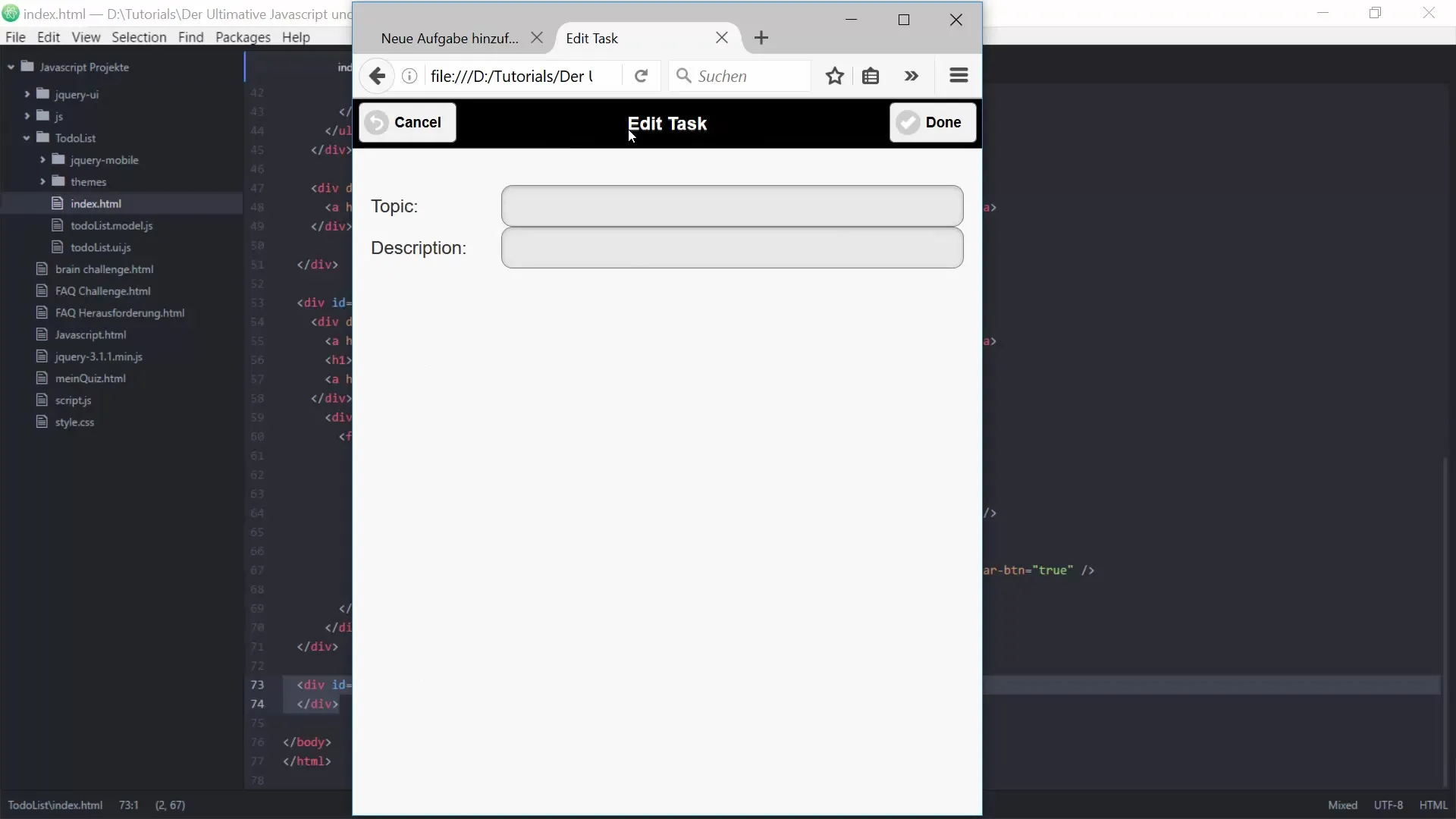
Now you adjust the second button. Change the name to "edit task save button," which will save the task. This new function should allow the user to save the task they are editing.
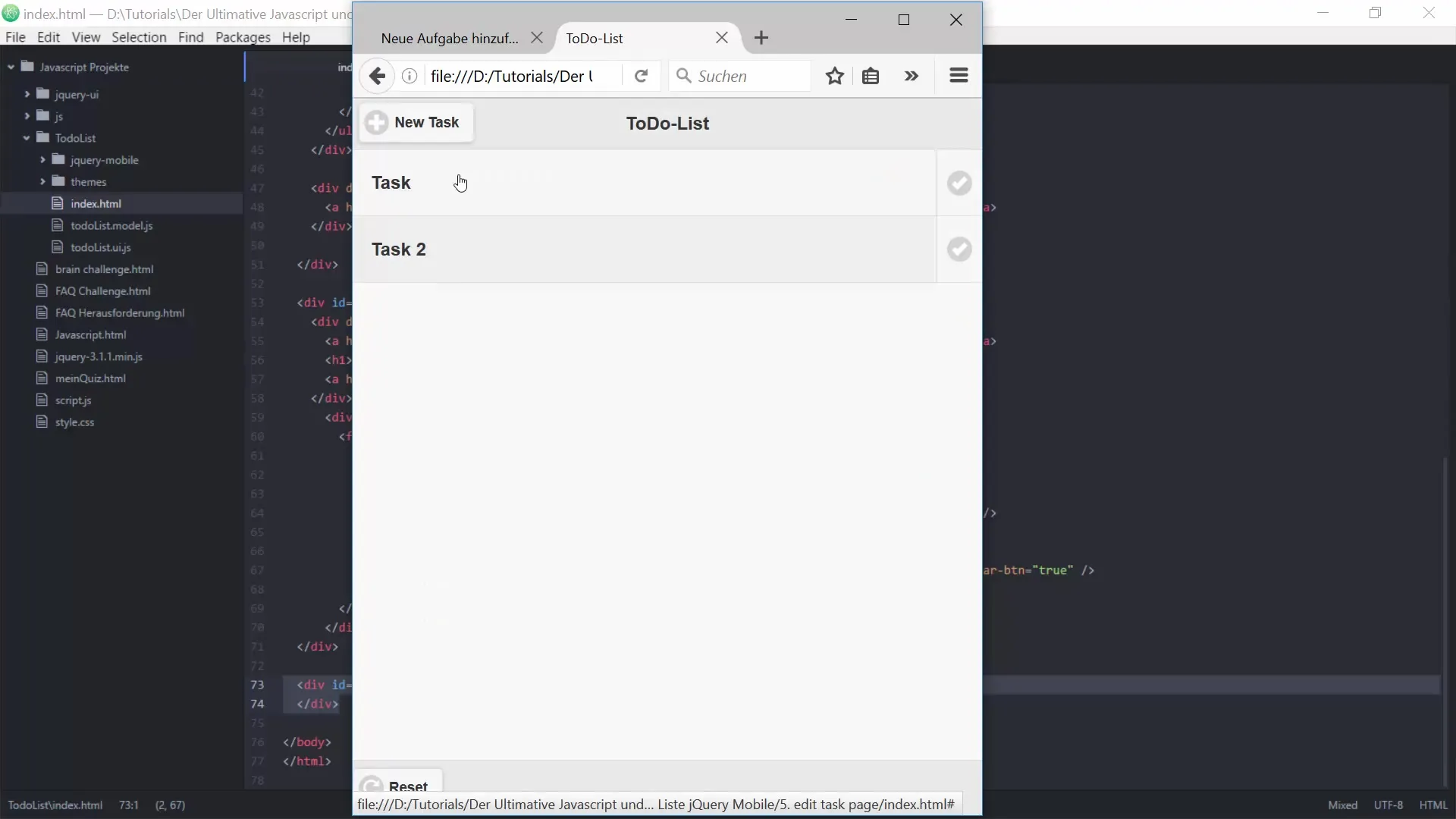
2. Setting Up the Content Area
The content area of your new Edit Task Page will be determined by a special form for Edit Tasks. Instead of the "add Task Form," you will use the "edit Task Form." This means you need to change the IDs and labels accordingly. Use "edit task name" and "edit task description" instead of the previous form labels.
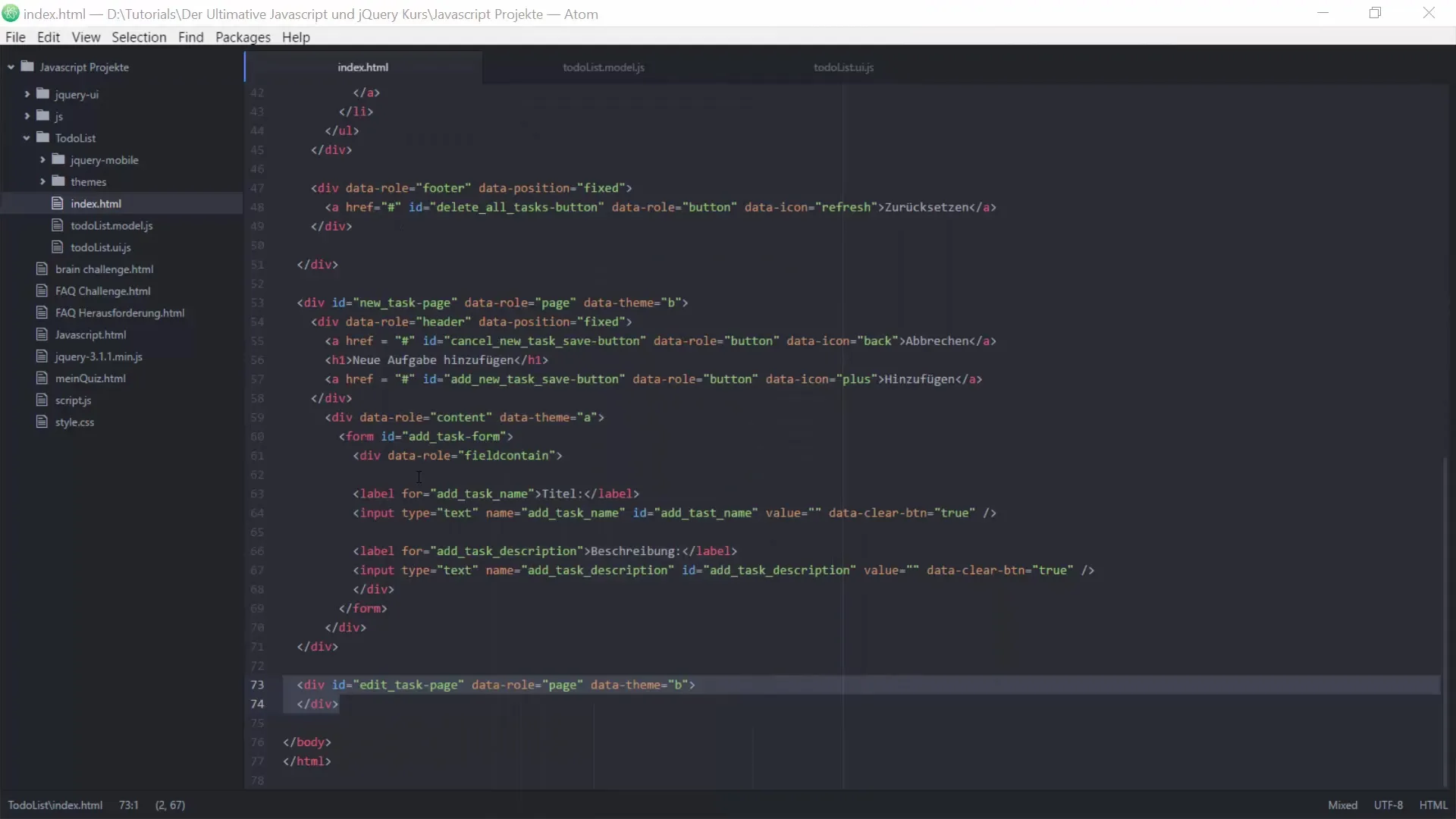
By using IDs, you can directly access the relevant DOM elements. This is especially important for later editing individual tasks.
3. Revamping the User Interface (UI)
To update the UI of your to-do list, you now need to add functions that will enable the user interface to call the Edit Task Page. This is done in your existing to-do list. Make sure that existing functions like "Show Homepage" and "Init New Task Page" are now also complemented for the Edit Task Page.
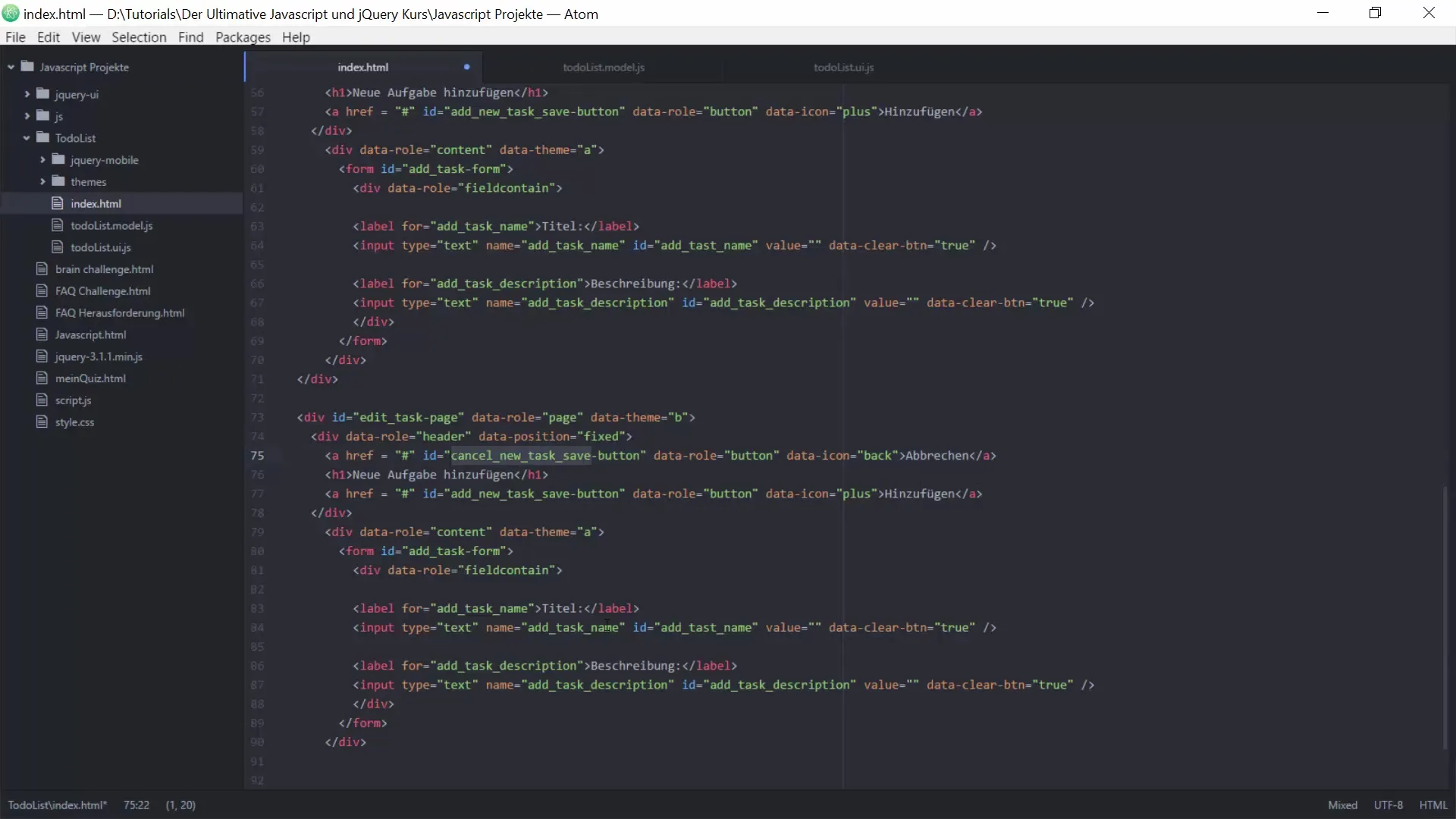
Here, add the new function "bind button events." This ensures that the correct button events are forwarded.
4. Inserting the Logic for Saving and Cancelling
Now you implement the logic on the Edit Task Page. Start with handling the "cancel edit task button." When this button is clicked, the user should be directed back to the homepage. You can do this simply by calling the "Show Homepage" function.
Next comes saving the specified edits. For this, you need a function that identifies the current task. This is done through the ID you defined in the task list.
5. Querying Clicks on the Tasks
To determine which task should be edited, you need to implement the logic "get target ID." When a task is selected, the ID is determined so that the changes can be applied to the correct task.
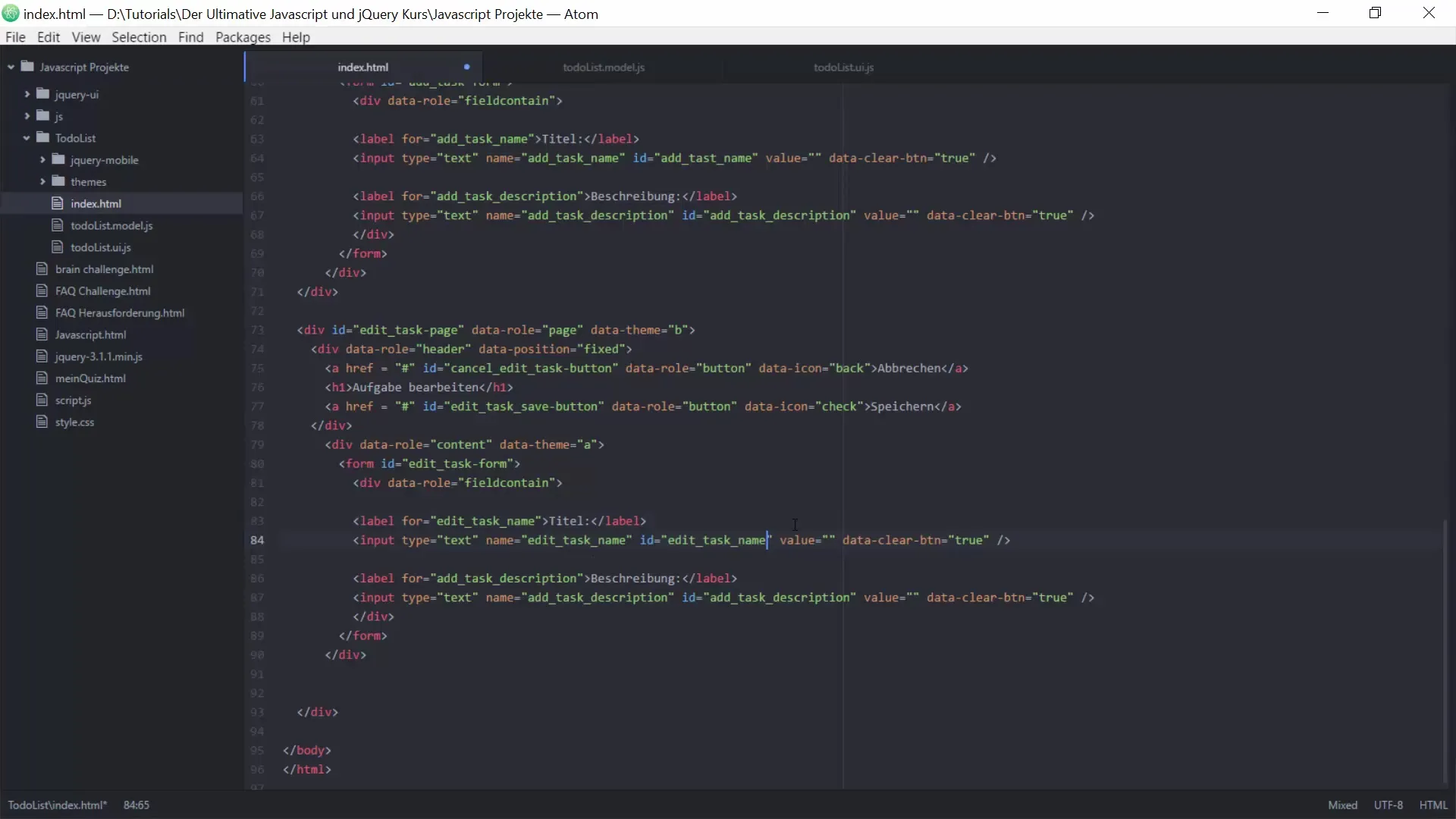
It is particularly important here that you determine which element in the DOM structure (Document Object Model) was clicked. When the user clicks on the task, the corresponding list item should be found, and its ID returned.
6. Editing and Deleting Tasks
The final phase is to edit or delete the tasks if necessary. If a task is to be deleted, you will use the ID to ensure that you remove the correct task from your list. In this case, you apply a query to determine whether the "complete task" element has been clicked. If so, the task will be deleted.
Otherwise, the Edit Task Page will be called to proceed with editing the selected task.
Summary – Editing To-do List: Step-by-Step Guide for JavaScript and jQuery
In this step-by-step guide, you learned how to create an Edit Task Page for your to-do list and how to implement the necessary functions to effectively edit tasks. You gained insights into how important IDs are for uniquely defining elements and how you can navigate between different pages of your app.
Frequently Asked Questions
Can I edit multiple tasks at once?This is not covered in this guide, but with further programming, it could be possible.
What happens if I delete a task?The clicked task will be removed from the list, and the UI will be updated.
Can I undo changes?Currently, there is no undo function. Changes are effective immediately.
Does it work on mobile?Yes, as long as the user interface is responsive, it should work well on mobile devices.


